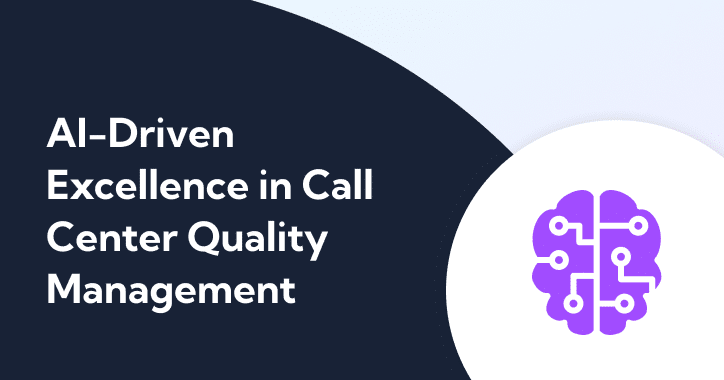It’s here and it’s bigger than most anticipated. We’re talking about a compliance crackdown from the Centers for Medicare & Medicaid Services (CMS). Not only has CMS doubled its budget for compliance audits between 2021 and 2022, but it has also sought an additional $50.5 million for audit funding in 2023 — which may potentially spell disaster for some contact centers.
Audits of Medicare Advantage Organizations (MAOs), Prescription Drug Plans (PDPs), and Medicare-Medicaid Plans (MMPs), collectively referred to as ‘sponsoring organizations,’ may send an influx of call volume to insurance providers’ contact centers. Let’s take a look at the role a contact center may play in the compliance crackdown, as well as how to best prepare.
What Does CMS Look for in Terms of Compliance?
It’s no secret that health insurance is one of the most regulated sectors, not just for patient and payer privacy but also for potential fraud and benefits abuse. So, what does that mean CMS will anticipate in terms of compliance (or a compliance crackdown), anyway? The answer partially lies in the Medicare Parts C and D Oversight and Enforcement Group (MOEG).
MOEG is a group within CMS responsible for creating and administering audit strategies. This group conduct audits of sponsoring organizations participating in CMS programs to measure compliance with CMS contracts, namely the requirements associated with:
- Access to medical services
- Access to prescription drugs
- Additional enrollee protections required by Medicare
Earlier this year, CMS specifically proposed to conduct greater levels of medical review in FY 2022, including pre- and post-payment audits and analysis of the Targeted Probe-and-Educate (TPE) process. Likewise, CMS requested additional funding — $50.5 million worth, to be exact — for modeling and analytics tools to better identify fraud, waste, and abuse.
A recent increase in funding has also enabled CMS to hire additional administrative law judges (ALJs) to help reduce the backlog of current Medicare provider appeals, which presently sits at five years. While compliance audits and appeals will largely impact providers, the contact center is often tasked with supplemental documentation and can anticipate an increase in call volume.
3 Ways to Prepare for Stricter Compliance Audits (in Real Time)
Now more than ever, health insurance contact centers must remain mindful of updated compliance concerns. With the threat of CMS audits lingering closer than they have in previous years, it’s imperative to seek solutions that can streamline contact center compliance and capabilities. Here are three tips to get ahead of potential compliance audits in real time.
1. Maintain Updated Scripts and Playbooks
With inbound calls to the contact center projected to increase as we navigate Medicare’s Annual Enrollment Period, average hold time (AHLDT) and average handle time (AHT) is only slated to increase as well. Unfortunately, the current AHLDT is already three times longer than a typical caller is willing to wait, currently averaging a whopping 17.4 minutes.
To best navigate an increase in call volume, contact centers must maintain up-to-date call center scripts and information access. Medicare programs (and similar health plans) are constantly evolving; therefore, it’s imperative to stay on top of current plans and pending changes with updated scripts and easily accessible data. Help contact center agents avoid a lengthy AHT (and even lengthier AHLDT) by providing the information they need at their fingertips.
2. Create Educational Opportunities
Continuing education is the key to successfully achieving compliance with CMS. Proposed rules shift practically every fiscal year, Medicare and Medicare Advantage Plans constantly update, and even privacy laws and data collection practices change year-over-year. Rather than simply train agents, use actual call recordings to form beneficial educational opportunities.
With Balto Real-Time QA, contact centers can instantly screen incoming calls to the contact center for quality assurance. Every call is scored in the moment and broken down into individual categories so operators can implement targeted compliance coaching. Even better, operators can use insights from Real-Time QA to discover common compliance errors.
Turn real data from your contact center into actionable lessons for team members. Whether it be a dedicated seminar or webinar for agents or a morning huddle for managers, the most frequently occurring compliance mistakes can be turned into workable insights. Real-time functionality can drive ongoing education among your agent team.
3. Coach in Real Time
Speaking of targeted compliance coaching, contact centers can leverage real-time functionality to autonomously assist agents on the floor as they navigate compliance regulations. Real-time Coaching empowers operators to get ahead of compliance concerns. For instance, operators can deploy real-time triggers and alerts for compliance keywords and directly chat with agents when alerts are fired to coach them when it matters most: in the moment.
It’s nearly impossible to memorize everything today’s Medicare recipients may say on call and provide accurate, compliant answers on the spot. With real-time solutions like Balto, everything an agent needs to know at the moment pops up on their screen. Managers can also easily pop in to lend a hand in make-or-break moments on the call.
Combat a Compliance Crackdown with Balto
It’s no secret that compliance requirements for health insurance are complicated — and even sometimes contradicting — with contact center agents responsible for providing friendly and efficient service all while speaking through lengthy (and ever-evolving) compliance scripts. But with the following tips and real-time assistance like Balto, they’re not impossible.
If you’re ready to learn how to combat a CMS compliance crackdown, schedule a demo with Balto today. We’d love to show you how our products can help streamline compliance efforts and enhance contact center productivity.






